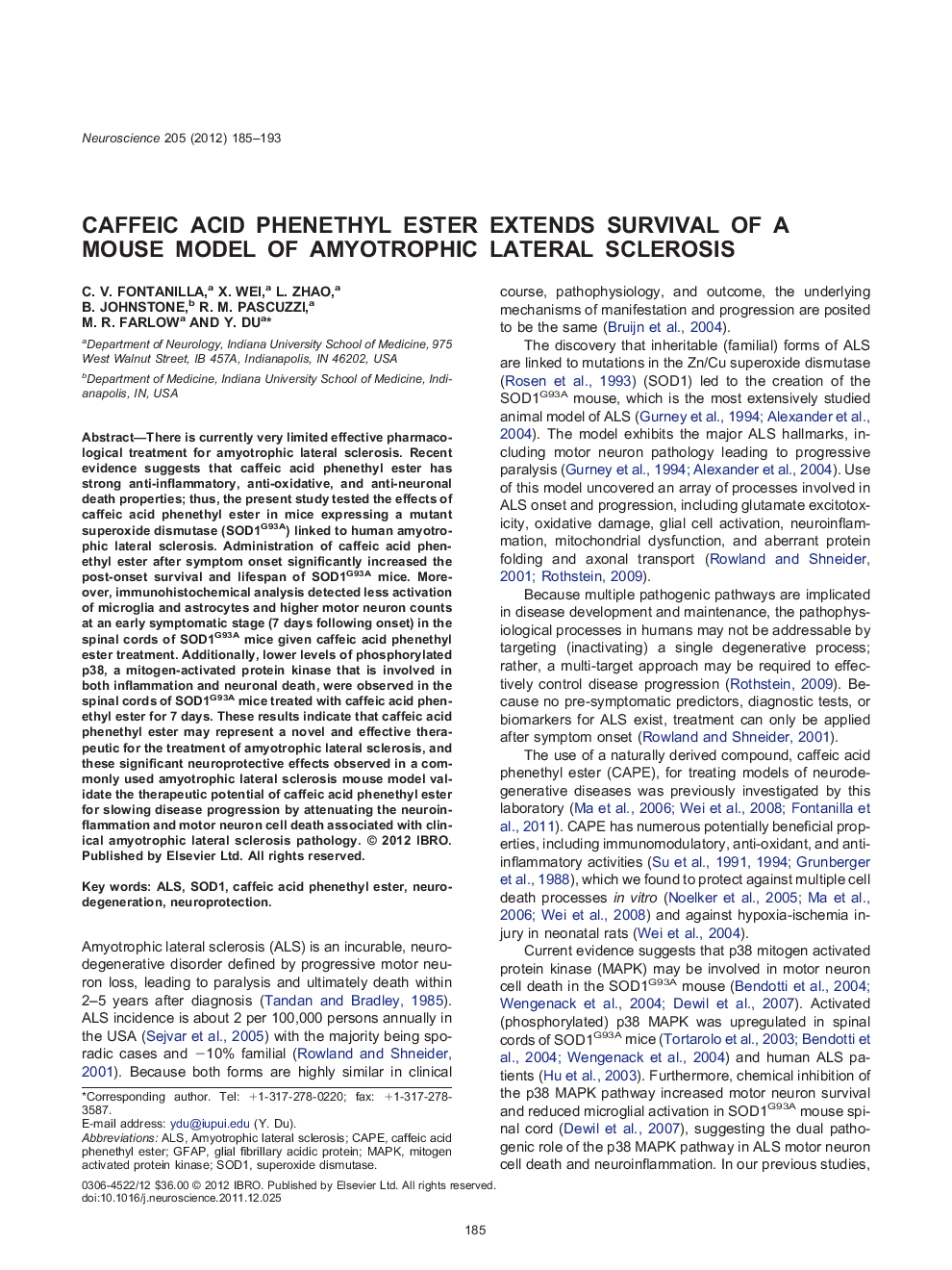| Article ID | Journal | Published Year | Pages | File Type |
|---|---|---|---|---|
| 6275814 | Neuroscience | 2012 | 9 Pages |
There is currently very limited effective pharmacological treatment for amyotrophic lateral sclerosis. Recent evidence suggests that caffeic acid phenethyl ester has strong anti-inflammatory, anti-oxidative, and anti-neuronal death properties; thus, the present study tested the effects of caffeic acid phenethyl ester in mice expressing a mutant superoxide dismutase (SOD1G93A) linked to human amyotrophic lateral sclerosis. Administration of caffeic acid phenethyl ester after symptom onset significantly increased the post-onset survival and lifespan of SOD1G93A mice. Moreover, immunohistochemical analysis detected less activation of microglia and astrocytes and higher motor neuron counts at an early symptomatic stage (7 days following onset) in the spinal cords of SOD1G93A mice given caffeic acid phenethyl ester treatment. Additionally, lower levels of phosphorylated p38, a mitogen-activated protein kinase that is involved in both inflammation and neuronal death, were observed in the spinal cords of SOD1G93A mice treated with caffeic acid phenethyl ester for 7 days. These results indicate that caffeic acid phenethyl ester may represent a novel and effective therapeutic for the treatment of amyotrophic lateral sclerosis, and these significant neuroprotective effects observed in a commonly used amyotrophic lateral sclerosis mouse model validate the therapeutic potential of caffeic acid phenethyl ester for slowing disease progression by attenuating the neuroinflammation and motor neuron cell death associated with clinical amyotrophic lateral sclerosis pathology.
â¶The effects of caffeic acid phenethyl ester in an ALS mouse model was examined. â¶CAPE lengthened disease duration and total lifespan of ALS mice. â¶Higher motor neuron counts were seen in lumbar spinal cord of ALS mice given CAPE. â¶Phosphorylation of p38 is reduced in lumbar spinal cord of ALS mice given CAPE. â¶CAPE treatment decreases glial activation in lumbar spinal cord of ALS mice.
